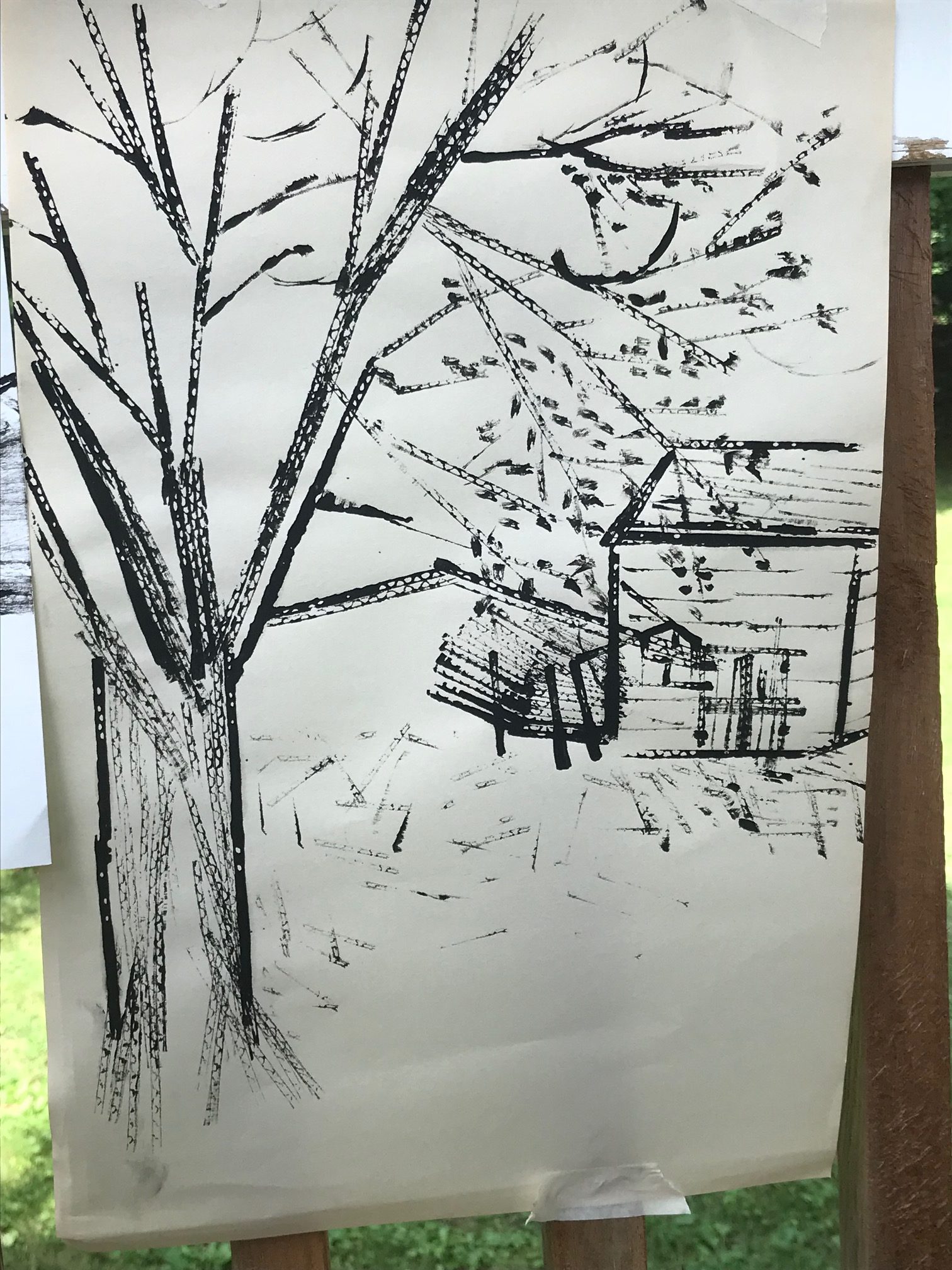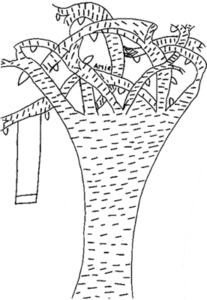
Trees are a common theme in children’s representational drawings. Many children, as well as adults, seem to have a favorite tree or a tree that is significant in their lives. The task of coming to know a tree by recreating it is a way to begin forming a relationship with the natural world and to appreciate the diversity within it. It is easiest to study trees, especially deciduous trees, in the spring just before they go into bloom, or in fall, after they have lost their leaves.





























